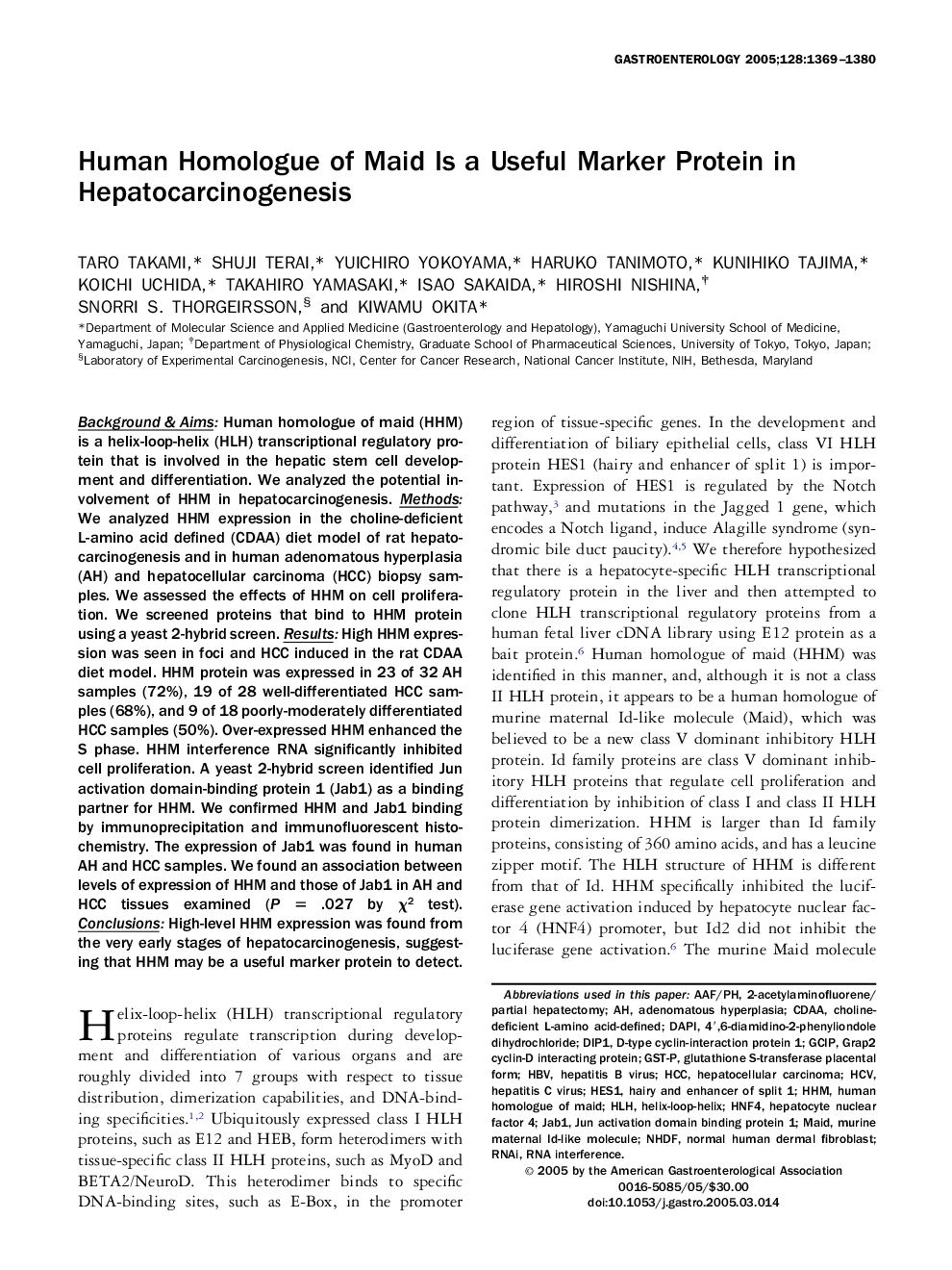| Article ID | Journal | Published Year | Pages | File Type |
|---|---|---|---|---|
| 9244308 | Gastroenterology | 2005 | 12 Pages |
Abstract
Background & Aims: Human homologue of maid (HHM) is a helix-loop-helix (HLH) transcriptional regulatory protein that is involved in the hepatic stem cell development and differentiation. We analyzed the potential involvement of HHM in hepatocarcinogenesis. Methods: We analyzed HHM expression in the choline-deficient L-amino acid defined (CDAA) diet model of rat hepatocarcinogenesis and in human adenomatous hyperplasia (AH) and hepatocellular carcinoma (HCC) biopsy samples. We assessed the effects of HHM on cell proliferation. We screened proteins that bind to HHM protein using a yeast 2-hybrid screen. Results: High HHM expression was seen in foci and HCC induced in the rat CDAA diet model. HHM protein was expressed in 23 of 32 AH samples (72%), 19 of 28 well-differentiated HCC samples (68%), and 9 of 18 poorly-moderately differentiated HCC samples (50%). Over-expressed HHM enhanced the S phase. HHM interference RNA significantly inhibited cell proliferation. A yeast 2-hybrid screen identified Jun activation domain-binding protein 1 (Jab1) as a binding partner for HHM. We confirmed HHM and Jab1 binding by immunoprecipitation and immunofluorescent histochemistry. The expression of Jab1 was found in human AH and HCC samples. We found an association between levels of expression of HHM and those of Jab1 in AH and HCC tissues examined (P = .027 by Ï2 test). Conclusions: High-level HHM expression was found from the very early stages of hepatocarcinogenesis, suggesting that HHM may be a useful marker protein to detect.
Keywords
Related Topics
Health Sciences
Medicine and Dentistry
Gastroenterology
Authors
Taro Takami, Shuji Terai, Yuichiro Yokoyama, Haruko Tanimoto, Kunihiko Tajima, Koichi Uchida, Takahiro Yamasaki, Isao Sakaida, Hiroshi Nishina, Snorri S. Thorgeirsson, Kiwamu Okita,
